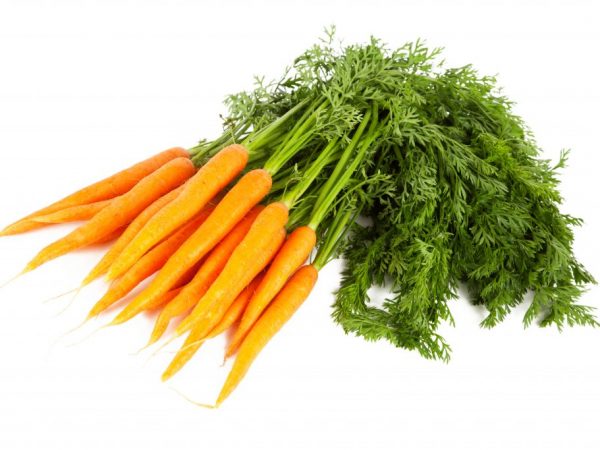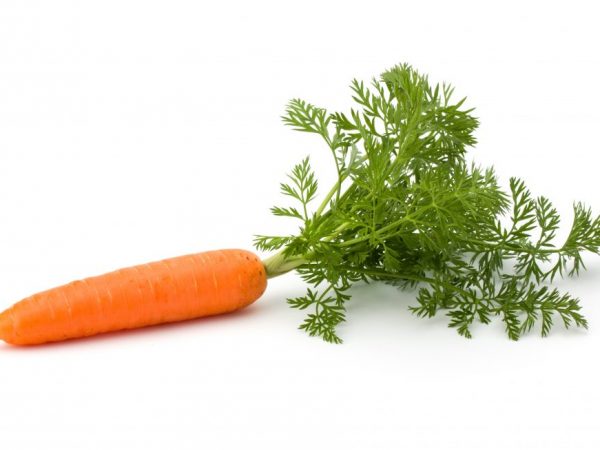Causes of yellowing and drying of carrot tops
If the carrot tops turn yellow, find out the reason. This often happens when the variety chosen for cultivation does not correspond to the climatic conditions of the region. In early species, the growing season ends faster, and the ground part dries up. But there are more serious factors in the manifestation of symptoms.

Causes of yellowing and drying of carrot tops
Causes of unhealthy tops
If the foliage has turned black and dried, this is sometimes due to:
- with insufficient watering (the plant suffers from drought) or its excess;
- with a lack of mineral fertilizers;
- with night frosts or too hot weather;
- with the defeat of fungal diseases or pests;
- with thickened landings;
- with increased acidity of the soil;
- with physiological reasons - it's time to harvest.
Diseases
Often the leaves of carrots begin to turn yellow when the culture is affected by the disease.
Cercosporiasis
Small dark spots appear on the leaves. Over time, the tops darken and rot. Root formation is disrupted. The vegetable remains small and curls.
Alternaria (black rot)
It appears as spots on the tops of a dark brown color, of various shapes and sizes. There is a faint black-green bloom on the fruit. The plant gradually turns black and dries up.
Fomoz
Adult crops are affected at the technical maturity stage. On the veins and petioles of leaves, gray-brown spots of an elongated shape are formed. The tops turn yellow and wither.
Rhizoctonia
First, lead-gray spots appear on the root crops, then their surface turns red (mycelium is formed). If the disease develops during the growing season, the tops become yellow, wither and dry out.
Gray rot
More often it manifests itself in storage facilities, although the infection occurs in the garden. During the growing season, dark or brownish small angular or oval watery spots appear on the leaves. They can dry out periodically.
Brown spot
First, brown spots with a yellow border appear on the tops and petioles, which then spread. The leaves turn black, as if they were burned with boiling water.
Pests
If the tops of carrots dries, the culture is inspected for the presence of insects:
- Scoops. The larvae of the pest gnaw at the root crop in the upper part or just below the ground, so the foliage withers.
- Leaf beetles. It is a microscopic insect that sucks juice from carrots and their ground parts. Leaves curl and dry out.
- Carrot fly. She gnaws a root crop, because of this, the tops turn yellow.
Culture treatment

Carrots need to be processed
They begin to examine the beds with the appearance of 3-4 leaves on the carrots. If the tops have turned yellow and dried up, they begin to fight this phenomenon. The affected plants are removed. Dolomite flour or chalk is added to acidic soil. Systemic fungicides are used against fungal diseases. Plants are treated with Oxyhom, Fundazol, Falcon or 1% Bordeaux liquid. It should be sprayed in dry, calm weather, observing the flow rate. Carrots are consumed 20 days after processing.
To scare off the carrot fly, plant garlic or onions next to it.
In the fight against this pest, the drugs "Zemlin", "Pochin", "Bazudin" help. They are introduced into the soil during sowing. They are treated with onion peel infusion, sprinkle the ground with ash or pepper. Use the "Nemabakt" agent against the scoop. This is a nematode species that kills caterpillars. In case of defeat by leaf beetle, infusion of tobacco is used. Also, the garden bed is covered with non-woven material from insects. It also contributes to the retention of moisture in the soil. For this purpose, a layer of straw mulch is laid.
Disease prevention
Sources of infection are seeds, plant debris, contaminated soil. Diseases also manifest themselves under conditions favorable for pathogens:
- sharp fluctuations in temperature;
- cool rainy weather;
- damage to root crops during harvest.
In order not to face this ailment, the following preventive measures are taken:
- observe crop rotation: carrots are planted in their original place after 3-4 years;
- properly prepare the seed: warm it up at a temperature of 40-50˚C for half an hour and pickle with a solution of potassium permanganate;
- do not plant a crop after onions and cabbage: they have the same diseases and pests;
- do not use fresh cow dung as fertilizer;
- apply the optimal amount of phosphorus and potash fertilizers, thereby increasing the immunity of the crop;
- observe the watering regime;
- weed the garden;
- collect plant residues;
- to process with 1% Bordeaux mixture or drugs "Narcissus", "Ecogel", "Zircon" according to the attached instructions;
- harvest in a timely manner.
Conclusion
To prevent carrots from falling, you need to properly care for the planting. It is much easier to prevent diseases than to get rid of them.
Weather conditions are impossible to predict, so the crop is sown at different times. This helps to harvest an excellent vegetable harvest.


